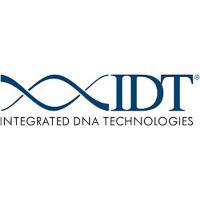Molecular Biological Identification and Characterization of Inherited Platelet Receptor Disorders
互联网
互联网
相关产品推荐

GLU-1D-1D/GLU-1D-1D蛋白/GLU-D1-1B蛋白/Recombinant Triticum aestivum Glutenin, high molecular weight subunit DX5 (GLU-1D-1D), partial重组蛋白
¥69

xGen Inherited Diseases Panel
询价

LDLR / LDL Receptor 兔单抗 (PE)
¥1100

PABPC4/PABPC4蛋白Recombinant Human Polyadenylate-binding protein 4 (PABPC4)重组蛋白PABP-4 (Poly(A)-binding protein 4) (Activated-platelet protein 1) (APP-1) (Inducible poly(A)-binding protein) (iPABP) (APP1) (PABP4)蛋白
¥2832

MUC5B/MUC5B蛋白Recombinant Human Mucin-5B (MUC5B)重组蛋白MUC-5B;Cervical mucin;High molecular weight salivary mucin MG1;Mucin-5 subtype B, tracheobronchial;Sublingual gland mucin蛋白
¥1836
相关问答

